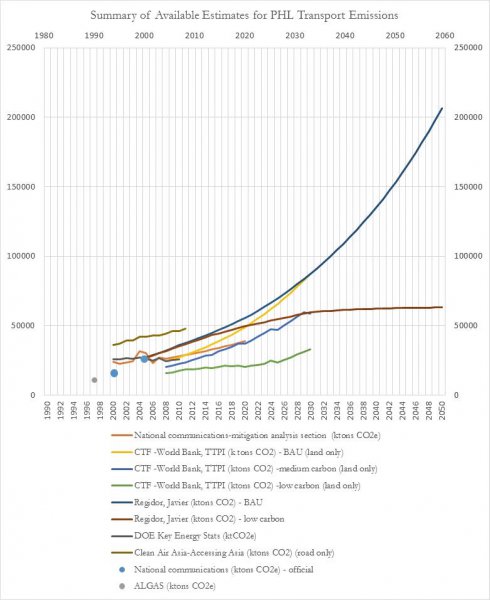Emission Scenarios for the Philippines’ Transport Sector: Overview of Existing Studies
 Understanding uncertainties and different outcomes for GHG emission scenarios by various studies is important for gaining insight in the transport sector’s role in climate change mitigation. This is useful for example in the context of the Intended Nationally Determined Contributions, that some countries are expected to communicate to the UNFCCC in 2015.
Understanding uncertainties and different outcomes for GHG emission scenarios by various studies is important for gaining insight in the transport sector’s role in climate change mitigation. This is useful for example in the context of the Intended Nationally Determined Contributions, that some countries are expected to communicate to the UNFCCC in 2015.
This document, prepared by Clean Air Asia, contains information on the existing studies and references that have estimated historical and projected emissions from the Philippine transportation sector. The tables included in this document contain concise explanations about the aspects that have been reviewed, such as the methodological approach for emissions quantification, the tools used and the description of the major assumptions that were used in the study, as well as the links to the references.
It intends to give a snapshot of the relevant studies that have been done in relation to transport emissions (with a particular focus on CO2). This document is based on studies that have been made available to the team during the time of the review and mainly looks into studies that have provided estimates of the emissions from the transportation sector in the country.
The document shows how different assumptions related to vehicle ownership, fuel economy, economic growth and the potential of sustainable transport can lead to vastly different emissions in 2030 or 2050. Even for current emissions, the uncertainties are considerable.